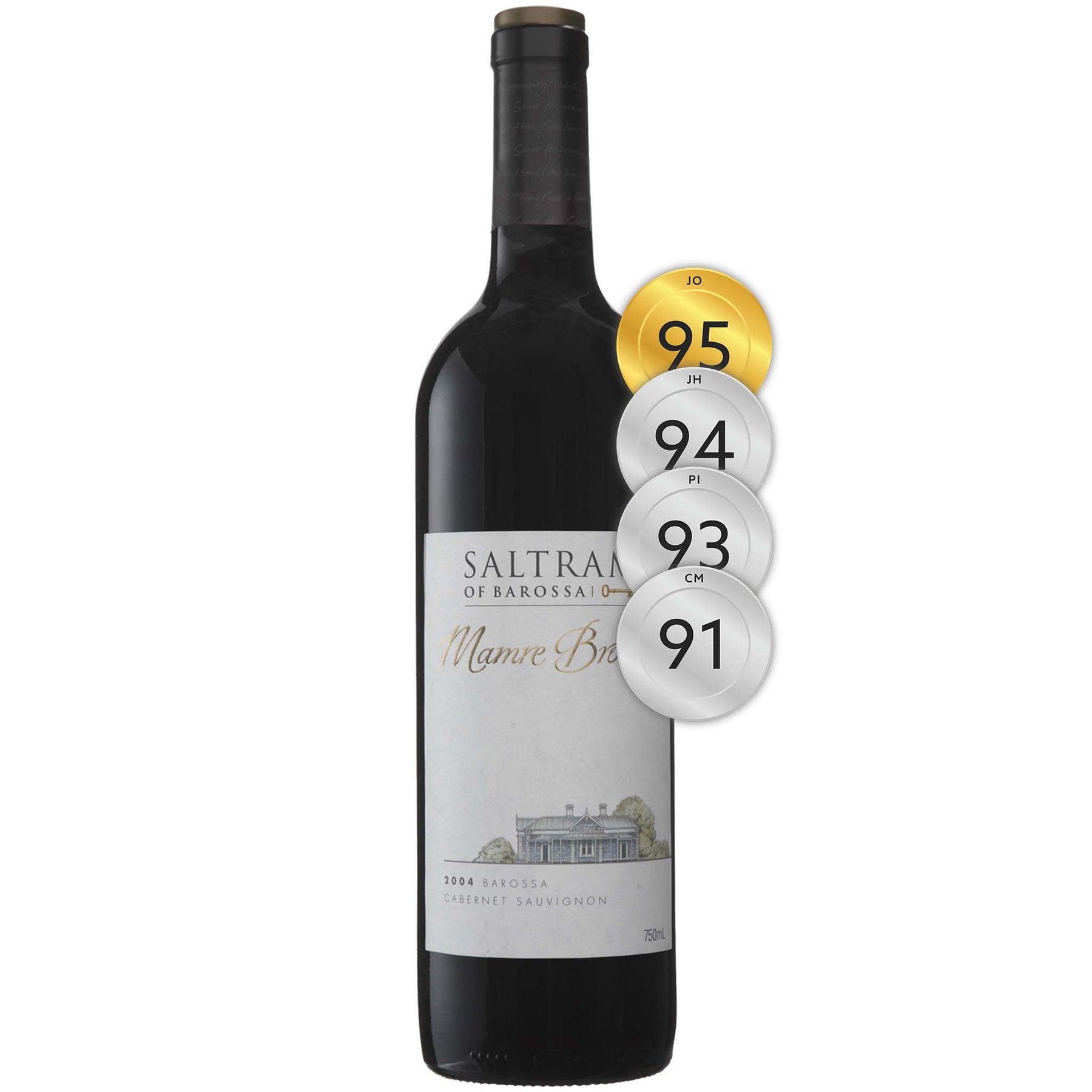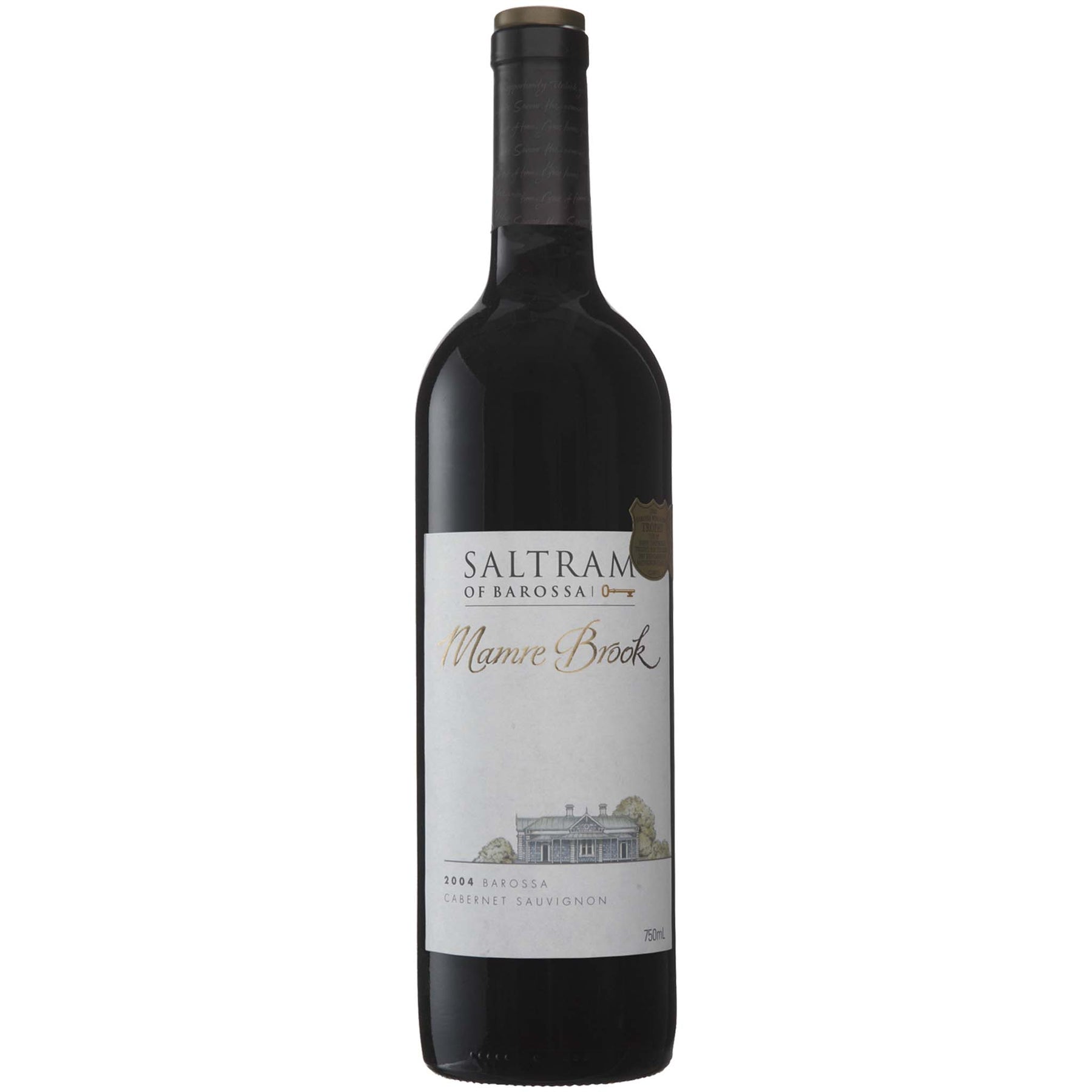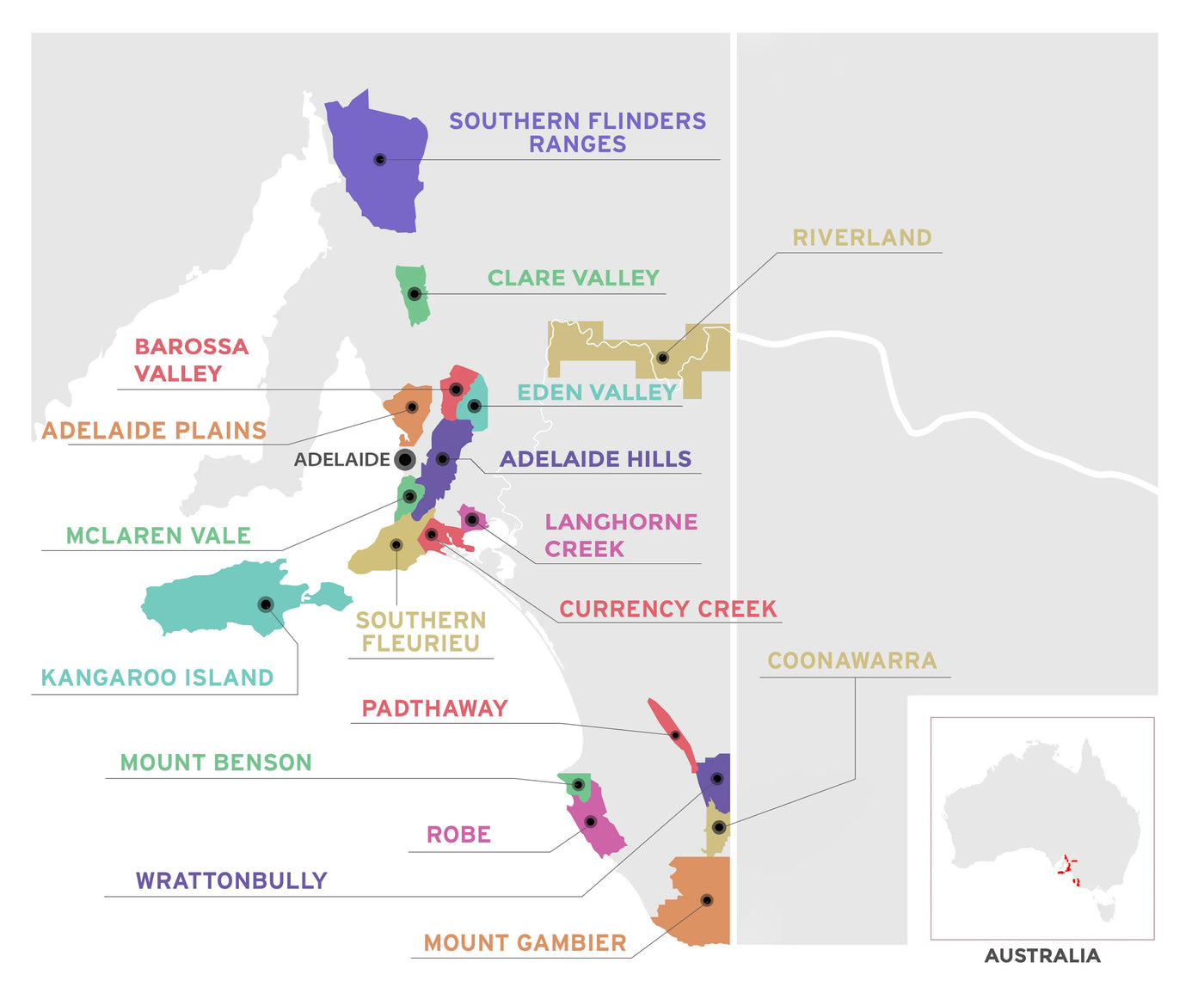

Mamre Brook Cabernet Sauvignon 2004
Style: Red Wine
Variety: Cabernet Sauvignon
Closure: Cork
Mamre Brook Cabernet Sauvignon 2004
Warehouse
34 Redland Drive
Vermont VIC 3133
Australia
Producer: Saltram
Country: Australia
Region: Barossa Valley
Vintage: 2004
Critic Score: 95
Alcohol: 14.0%
Size: 750 ml
Drink by: Now
The legendary Peter Lehmann was appointed winemaker/manager at Saltram in 1959, a position he held for 20 years before leaving to start Peter Lehmann Wines. He introduced the Mamre Brook label with the 1963 vintage, which became one of the most sought-after red wines in South Australia.
"A stunningly varietal and perfumed cabernet whose highly aromatic perfume of cassis, violets and restrained cedar/vanilla oak are underpinned by minty nuances of crushed leaves. Full to medium in weight, its fine and pristine palate of crystalline cassis/plum flavours is tightly knit with sweet, creamy vanilla oak and supported by a chalky spine of powdery tannins. There's suppleness and softness about this stylish and exceptionally varietal wine, with a lingering finish of star anise." Jeremy Oliver - 95 points
Expert reviews
"A stunningly varietal and perfumed cabernet whose highly aromatic perfume of cassis, violets and restrained cedar/vanilla oak are underpinned by minty nuances of crushed leaves. Full to medium in weight, its fine and pristine palate of crystalline cassis/plum flavours is tightly knit with sweet, creamy vanilla oak and supported by a chalky spine of powdery tannins. There's suppleness and softness about this stylish and exceptionally varietal wine, with a lingering finish of star anise. Drink 2024-2034." Jeremy Oliver - 95 points
"Strong blackcurrant fruit on the medium- to full-bodied palate; evident but balanced tannins. It's only in very good and relatively cool vintages that the Barossa is suited to cabernet. 14º alc. Drink Now - 2020." James Halliday, Halliday Wine Companion - 94 points
"Nigel Dolan is the winemaker, renown for his reds, Shiraz especially, but here is an example of Barossa Cabernet that will make you sit up and take notice. Rich bright purply crimson. Luscious, vibrant and evocative with seductive aromas. Stunning aromatics truly. Purely fruit driven in aroma profile. Think blackcurrants, plums, blackberry and liquorice along with milk chocolate. Deep rich and intense. Smooth and well rounded, fine tightly knit tannins and seamless oak. It slowly unwinds in the glass evolving all those typical Cabernet features with a long delicious finish. Drink to 2024." Paul Ippolito - 93 points
"I've come this far without mentioning a few of the big boys: the ones that make you do a double-take at the price. The most obvious of these is the Saltram Mamre Brook Cabernet Sauvignon 2004 ($24) – I know that its maker, Nigel Dolan, ranks this slightly below the 2002 version, but I'm not sure that it isn't better balanced – and also more varietal. It's long, dusty, firm, curranty and brilliantly flavoured, and while it could be called a tad boring, at this price (it's being discounted to below $20) it's not worth questioning: just stock up. This is one wine that will cellar very well medium term – the 98 Mamre Brooks have drank beautifully over the past couple of years, and the 2004 is better than the 1998." Campbell Mattinson, The Wine Front – 91 points
About the winery

William Salter arrived in South Australia from England in 1839 and five years later purchased land near Angaston in the newly opened land survey known as the Barossa Valley. A deeply religious man, he named the property "Mamre Brook" after an Old Testament camping spot west of the Dead Sea. In 1859, he founded Saltram with his son Edward under the name of W. Salter & Son. They planted the first vines in the Barossa - 10 acres of Shiraz at the eastern end of the property. A shed was erected for making wine and a cellar was carved out of a nearby hill. Their first vintage in 1862 produced 1800 gallons (8000 litres) of a wine they called 'No. 1 Shiraz'.
William Salter passed away in 1871, leaving Edward to run the property. In 1873, by which time the vineyard had grown to 25 acres, Edward employed Alfred Percy Birks (who subsequently set up AP Birks' Wendouree winery in the Clare Valley) to introduce Saltram wines to New Zealand. In 1882, Thomas Hardy & Sons agreed to purchase and market all of Saltram's production, which led to the establishment of Saltram in the English trade. By 1891, the size of the vintage had grown to 182,000 litres, 3/4 of which was high quality dry red, mainly shiraz, for export markets.
Edward's sons, Charles and Leslie, joined the business in 1898. Charles was appointed manager until he left in 1902 to start his own business and Leslie succeeded his brother. Leslie became close friends with Ronald Martin of Stoneyfell and, in 1920, Saltram was converted to a company and Stoneyfell took a one-third interest. Following Leslie Salter's retirement in 1937, Saltram was managed by Stoneyfell and in 1941 it became a wholly owned subsidiary of Stoneyfell. The two companies worked in tandem, winemaking was carried out at Saltram and maturation and bottling at Stoneyfell.
The legendary Peter Lehmann was appointed Winemaker/Manager in 1959, a position he held for 20 years. Lehmann introduced the Mamre Brook label in 1963, which became one of the most sought-after red wines in South Australia. The Dalgety Pastoral Company took ownership of Saltram in 1972, but disposed of the winery shortly before the 1979 vintage, leaving wine maker Peter Lehmann without a job and many grape contractors without a buyer for the year’s crop. Lehmann parted company with Saltram to start Peter Lehmann Wines and rescued the growers in time for the vintage.
From 1979 through to the early 1990s were difficult times at Saltram under the new owners, Seagram, the giant Canadian spirit company. They had little understanding of wine and scant respect for history, continually shifting the focus on wine styles. Wine quality deteriorated and the flagship brands Mamre Brook and Metala gave way to Saltram Pinnacle Selection, widely viewed in the industry at the time as a poor joke.
Yet Saltram survived the Seagram period. Just two years before the end of that sorry time, in 1992, stability returned when Nigel Dolan was appointed Chief Winemaker, a position he held for 15 years. Under new owners Rothbury in 1994 and then Mildara Blass in 1996, Nigel took Saltram back to its roots, focusing on Barossa sourced grapes and styles which had made Saltram famous. For example, Dolan introduced Saltram No 1 Shiraz as a super-premium, rich red wine in the classic Barossa mould. The wine took its name from the very first wine made by Edward Salter in 1862. Nigel's achievements include being named South Australian Red Winemaker of the Year in 1996 and Barossa Winemaker of the Year in 2000.
In 2009, Saltram celebrated its 150th anniversary and to mark this milestone released the first vintage of The Journal Centenarian Old Vine Shiraz as homage to the expansive 'Vignerons Journals' kept by the Salters - from the first vine plantings in 1859, the journals meticulously recorded vineyard and winemaking activities.
Under Mildara Blass, which later became Foster's Group, Foster's Wine Estates and finally Treasury Wine Estates in 2005, Saltram has enjoyed an extended period of stability and growth. For over 16 decades, only ten senior winemakers have been in charge at Saltram - testament to the exceptional standards and commitment that the portfolio is built upon. The current winemaker is Alex MacKenzie, who took over from Shavaughn Wells in 2017, when she left to work at TWE stablemate Penfolds.


South Australia
South Australian is responsible for more than half the production of all Australian wine. It is home to more than 900 wineries across 18 wine regions. The regions are Adelaide Hills, Adelaide Plains, Barossa Valley, Clare Valley, Coonawarra, Currency Creek, Eden Valley, Kangaroo Island, Langhorne Creek, McLaren Vale, Mount Benson, Mount Gambier, Padthaway, Riverland, Robe, Southern Fleurieu, Southern Flinders Ranges and Wrattonbully.
Many of the well-known names in the South Australian wine industry established their first vineyards in the late 1830s and early 1840s. The first vines in McLaren Vale were planted at Reynella in 1839 and Penfold's established Magill Estate on the outskirts of Adelaide in 1844.
South Australia has a vast diversity in geography and climate which allows the State to be able to produce a range of grape varieties - from cool climate Riesling in the Clare and Eden Vallies to the big, full bodied Shiraz wines of the Barossa Valley and McLaren Vale. Two of Australia's best-known wines, Penfolds Grange and Henschke Hill of Grace, are produced here. There is much to discover in South Australia for the wine lover.

